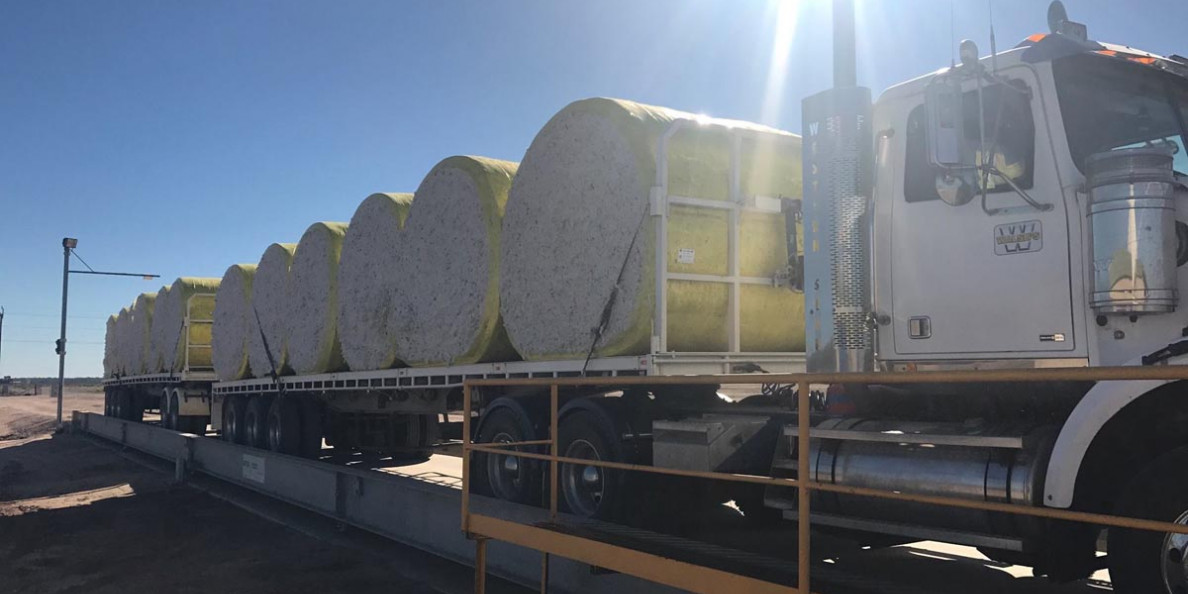From USDA
The latest U.S. Department of Agriculture (USDA) cotton projections for 2020/21 (August-July) indicate that global cotton mill use is forecast to rebound after a 15-percent reduction in 2019/20 that was associated with the global economic slowdown.
World cotton consumption is projected at 114.3 million bales in 2020/21, rising 11.7 percent from 2019/20’s 102.4 million bales—the lowest in 16 years. Mill use is forecast to increase for each of the leading raw cotton spinners in 2020/21, with China and India accounting for a combined 52 percent of the world total.
Domestic Outlook
U.S. 2020 Cotton Crop Projection Reduced in July
U.S. cotton production in 2020 is projected at 17.5 million bales this month, 2 million bales lower than the June projection and 2.4 million (12 percent) below the 2019 crop. A lower cotton area and yield combined for this month’s reduction.
Based on USDA’s Acreage report released June 30, U.S. producers had planted or intended to plant about 12.2 million acres to cotton in 2020, 11 percent (1.5 million acres) below both the March indications and the final 2019 plantings (see table 10 associated with this report).
The upland cotton area projection is lower for each region of the Cotton Belt in 2020. Area in the Southwest is forecast at 7.4 million acres, 5 percent below 2019 and the lowest in 4 years. The Southwest is expected to account for 62 percent—the second highest on record—of the total U.S. upland area in 2020, indicating the region’s importance to U.S. cotton production.
In the Southeast, 2020 cotton acreage is projected at 2.45 million acres, 515,000 acres (17 percent) less than 2019 but only 100,000 acres below the 5-year average. The Southeast is forecast to account for 20 percent of the U.S. area in 2020, slightly below the 5-year average.
For the Delta, 2020 cotton area is estimated at approximately 1.9 million acres, nearly 22 percent below 2019 and the lowest since 2016. The region is expected to account for 16 percent of the U.S. upland area in 2020, slightly above the 5-year average.
Meanwhile, upland cotton plantings in the West are expected to decrease to 225,000 acres (2 percent of the total), 19 percent below 2019 and the lowest in 5 years. In addition, extra-long staple (ELS) cotton—mostly grown in the West—is forecast at 195,000 acres in 2020, 15 percent less than a year earlier and the lowest since a similar amount was planted in 2016.
Total cotton harvested area is projected in July at 10.25 million acres, 12 percent below 2019. U.S. abandonment in 2020 is forecast at 16 percent, slightly above the previous year. The abandonment projection is based on 10-year averages by region, with the Southwest adjusted to about 25 percent to reflect crop and moisture conditions to date.
The U.S. cotton yield—projected at 820 pounds per harvested acre—is based on 10-year average yields by region and would be the lowest in 5 years. The yield reached a record of 905 pounds per harvested acre in 2017, but has declined since then, totaling 823 pounds in 2019.
In August, USDA’s National Agricultural Statistics Service (NASS) will publish its first survey-based estimates for 2020.
U.S. cotton crop development as of July 12 indicated that 63 percent of the 2020 crop was squaring, compared with last season’s 56 percent and the 2015-19 average of 62 percent. In addition, cotton area setting bolls had reached 18 percent, equal to a year ago but slightly below the 5-year average.
Meanwhile, U.S. cotton crop conditions since early June have been below both 2019 and the 5-year average. As of July 12, 44 percent of the U.S. cotton area was rated “good” or “excellent,” compared with 56 percent in 2019, while 26 percent was rated “poor” or “very poor,” compared with 15 percent a year ago.
U.S. Cotton Export and Stock Estimates Revised
The U.S. cotton demand (mill use plus exports) projection for 2020/21 is reduced in July to 17.8 million bales—down 1 million bales from the June forecast—which is now similar to the previous 2 seasons’ demand. For 2020/21, U.S. mill use is forecast at 2.8 million bales, a rebound from 2019/20’s estimated 2.5 million bales.
On the other hand, U.S. cotton exports are decreased to 15.0 million bales, reflecting this month’s reduced 2020/21 foreign import demand expectations as well as a lower U.S. crop projection. The U.S. share of world trade is projected at 36 percent, down from 38 percent in 2019/20, as competition with other exporters increases.
Meanwhile, U.S. cotton exports for 2019/20 are increased 200,000 bales this month to 15.2 million bales based on the latest cotton shipments reported in USDA’s Export Sales reports and export data released by the U.S. Census Bureau.
In addition, U.S. cotton exports are adjusted slightly higher for 2017/18 (+2,000 bales) and 2018/19 (+74,000 bales) based on revisions to the U.S. Census Bureau data, which are used in conjunction with Export Sales data to determine the USDA export estimate.
Based on USDA’s July supply and demand estimates, 2020/21 U.S. cotton ending stocks are projected at 6.8 million bales, 300,000 bales below the year before but the second highest since 2007/08 when stocks were nearly 10.1 million bales.
In addition, the 2020/21 stocks-to-use ratio (38 percent) is forecast slightly below 2019/20 and would equal the second highest since a similar ratio was reported in 2008/09. As a result, slightly smaller stocks and a lower stocks-to-use ratio is expected to keep prices near those of 2019/20.
The 2020/21 U.S. upland farm price is forecast at 59 cents per pound, the same as for 2019/20 but below 2018/19’s 70.3 cents per pound.


